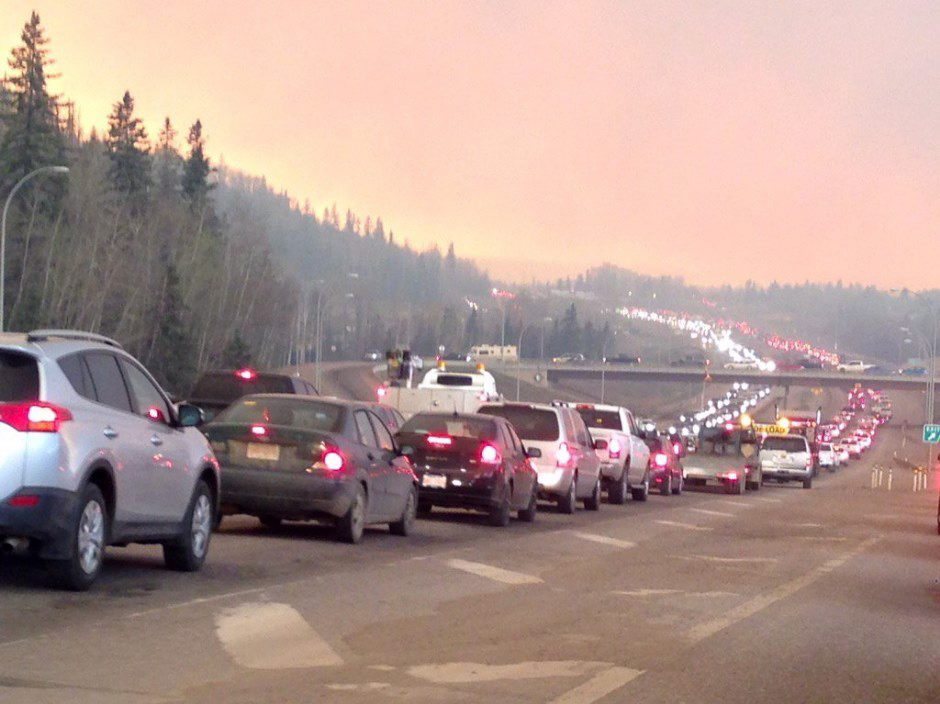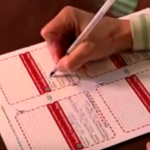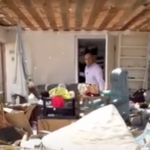Fort McMurray Wildfire Demonstrates SHTF Response Complications

The Fort McMurray wildfire in Canada that wiped out an entire town in minutes is a textbook example of what can go wrong during a SHTF situation. People were unprepared, evacuation routes were cut off, shelters were vulnerable, and the government was ill-equipped to deal with the situation. Consequently, we can learn an awful lot from the problems that people faced during this crisis in order to improve our own preparedness efforts.
“I Grabbed What I Could”
One of the things that kept coming up as residents recounted their evacuation stories was that they had 30 minutes to grab their belongings and get out. So many people said that they stuffed what they could in backpacks, suitcases and pillow cases. Descriptions of clothing, important documents and their banking information were common examples of what they quickly assembled and fled with.
If only they had bug-out bags that were ready to go. We talk about this time and time again in preparedness circles. You never know when you will need to flee at a moment’s notice, and having a bug out bag stocked with your essentials will make evacuating a lot easier and productive. It also gives you time to grab secondary, “optional” items. You don’t have to panic, and you can avoid the racing mind, panic and rushing around the house to grab what you can before running out the door. A bug out bag is a must, and unfortunately many people in Fort McMurray didn’t prepare ahead of time.
Evacuation Routes Were Impassable

The fire kept jumping and changing direction. Roads that people were told to use quickly became impassable, and this created huge traffic jams as evacuees had to change direction and take alternate routes. Keep in mind that this was a small community in the middle of nowhere. Imagine the chaos that would ensue if a similar situation took place in a large city.
This is why it’s so important to have backup plans in place, and choose routes where the rest of the herd will not be taking. You also want to get ahead of the evacuation instead of waiting for the last possible moment. It’s always better to be in a safe place after a false alarm than to be stuck in the middle of ground zero along with hundreds or thousands of other panicking people.
Shelters Were Vulnerable

Another serious problem with the Fort McMurray fire was that it changed direction and threatened what were thought to be safe shelters. People who already fled once had to quickly gather their belongings, get in their vehicles and bug out once again. A lot of these alternatives were not suitable shelters. They lacked the facilities that the ones emergency managers planned to use for years, and it wasn’t until the middle of the crisis that people realized that safe places were really not safe at all.
Disruptions for Supplies and Relief Services

The unpredictable fire also cut off routes for emergency services and relief agencies. Consequently, help couldn’t get to where it needed to go. This is something that happens time and time again, yet emergency planners rarely account for this reality. Bottlenecks, frustration, confusion and total disorganization sets in, and this creates problems with distribution that can take days to resolve after the crisis passes.
One of the more interesting tales was a family that somehow ran into a helicopter pilot who was on the ground for some reason. He offered to give them a lift to the airport. The left their vehicle as well as many of their supplies behind and was able to fly out of the disaster area before things got really bad. They jumped on a plane at the airport and got to one of the larger cities hundreds of miles from the disaster area. Trust me, this stroke of luck will not happen to the 99.9% of other people who are trying to get out of harm’s way.
The lesson here is clear. All of the things that we talk about with respect to preparing for disaster apply in the real world. Take the time to prepare and plan now, so you can avoid a lot of the problems that unfold during a crisis. None of us ever know what we will face when that time comes, and time is of the essence. Learn from what happened in Fort McMurray, and never take anything for granted.













